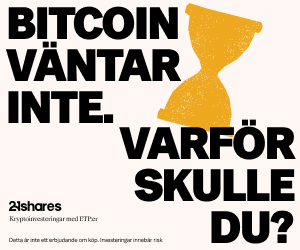Nyheter
Geopolitical Conflict on the Rise, while Ethereum Receives its Biggest Boost
Publicerad
2 år sedanden
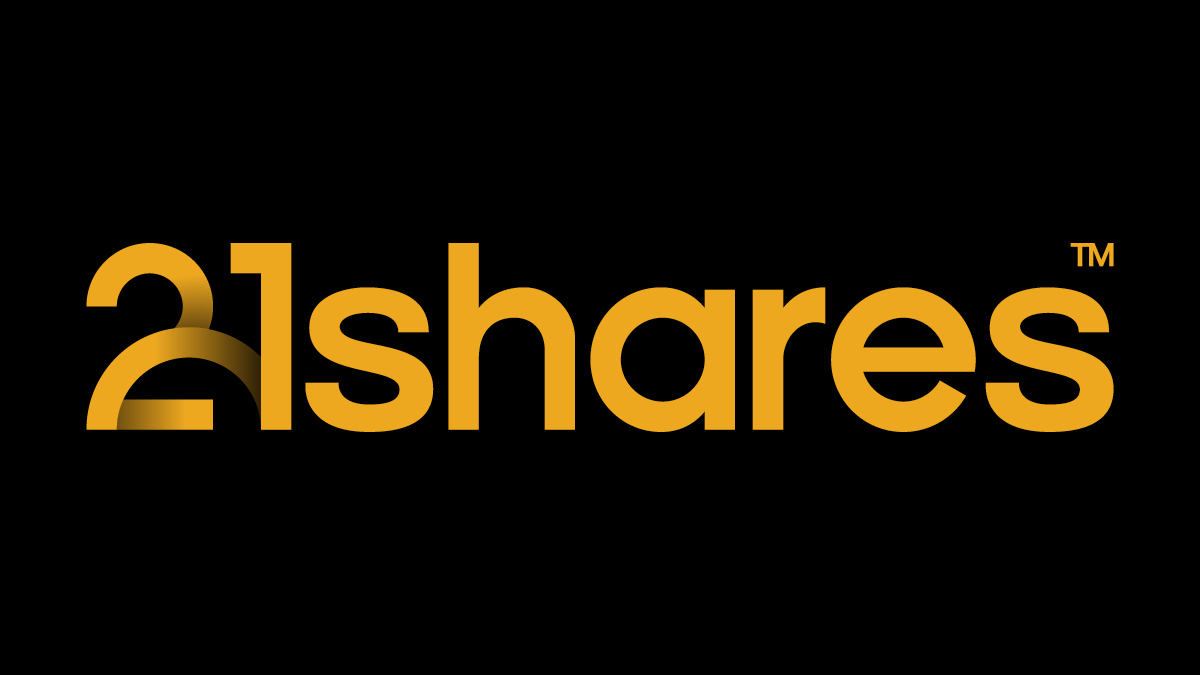
• Expanding Geopolitical Conflict Throws Crypto in Turmoil, Hong Kong ETFs Revive Hope
• Ethereum’s Most Anticipated Application of the Year is Live
Expanding Geopolitical Conflict Throws Crypto in Turmoil, Hong Kong ETFs Revive Hope
The latest Consumer Price Index (CPI) report released last Wednesday revealed a hotter-than-expected inflation rate of 3.5%, exceeding forecasts of 3.4%. This marks the fourth consecutive month where inflation has surpassed expectations, dimming hopes of rate cuts in the near future, resulting in a sustained high interest environment. This is further evidenced by interest rate futures currently pricing in just two rate cuts for the entirety of 2024, a significant shift from four months ago, when markets were predicting a more hawkish approach. Further, the conflict between Iran and Israel escalated more this weekend, as Iran launched a drone strike towards Israel, who are said to be potentially preparing for ‘retaliation’. This rise in geopolitical tensions coincided with a decline in the crypto market as Bitcoin (BTC) and Ethereum (ETH) prices fell by 8.22% and 11.29% respectively.
That said, it’s worth remembering that Bitcoin is viewed as a flight to safety during geopolitical conflicts. For instance, BTC grew by almost 17% during Russia’s invasion of Ukraine. This was driven by the fact that the average Russian citizen was able to withdraw their capital out of banks promptly before the imposed sanctions. Similarly, Ukrainians leveraged Bitcoin’s decentralized nature to navigate the overall shutdown of their financial system, while leveraging it to resume raising donations, showcasing its value as a decentralized and globally accessible asset immune to disruptions.
However, Bitcoin’s response to Iran’s recent escalation may have been adverse. This is given the gravity and the complexity of the geopolitical situation and its potential to entangle several other actors into the conflict, potentially affecting a broader swath of the world, including global trade and economic stability. Nevertheless, Bitcoin’s properties uniquely position it to serve a dual function as both a risk-on and risk-off asset. This duality could explain why its behavior diverged from that of gold in recent days, facing a drawdown last week versus benefiting from Russia’s conflict in 2022, as shown below in Figure 1.
Figure 1: BTC vs Gold Performance in 2022 vs 2024 – On a Weekly Timeframe
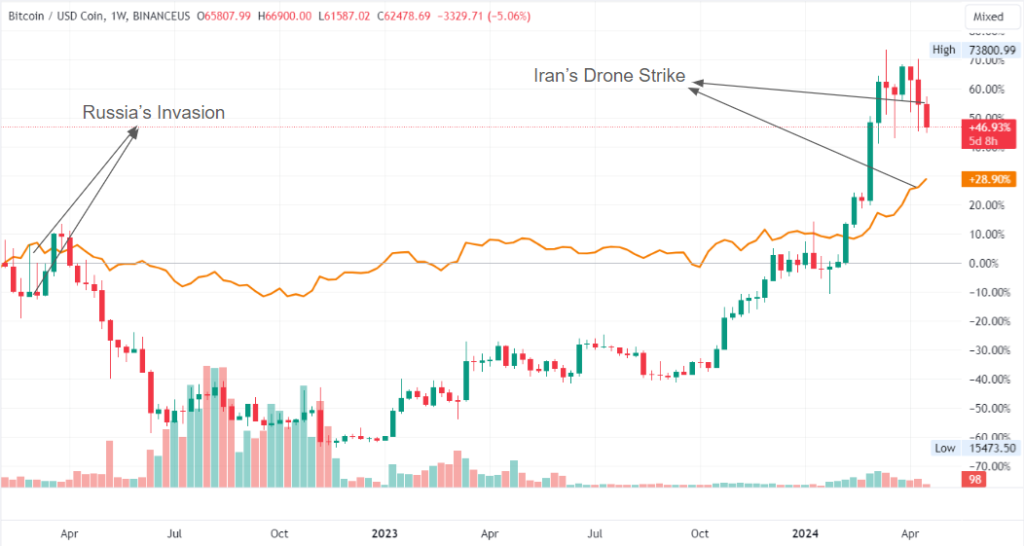
Source: TradingView
Finally, while the industry showed signs of a tentative recovery following last week’s economic challenges, evidenced by BTC soaring to nearly $67K on Monday, it’s crucial to maintain vigilance and closely monitor Israel’s response as it could have additional repercussions on the global market. Bitcoin faces a pivotal week with the highly anticipated Bitcoin Halving event scheduled in just four days, which will cut the issuance of new BTC in half, further tightening its already limited supply. This scarcity narrative is often seen as a bullish signal, which potentially bolsters Bitcoin’s position as a store of value and a hedge against inflation, as investors seek refuge in the current environment.
Adding to the positive sentiment, the Hong Kong Securities and Futures Commission (SFC) recently granted conditional approval for the launch of the first spot Bitcoin and Ethereum ETFs. The investment vehicle could unlock up to $25B in demand from Chinese investors via the Southbound Stock Connect program, according to Matrixport. The approval could also expand BTC’s market penetration into the wealth management sector in Hong Kong valued at $1.15T. The combined effect of the halving and the ETF approvals could provide a much-needed boost to the industry’s current momentum. A trend which is evident in Figure 2 below, indicating that flows into BTC have remained positive since the beginning of the year.
Figure 2 – *BTC Monthly Balance Change vs BTC Monthly Issuance vs ETF Cumulative Flows
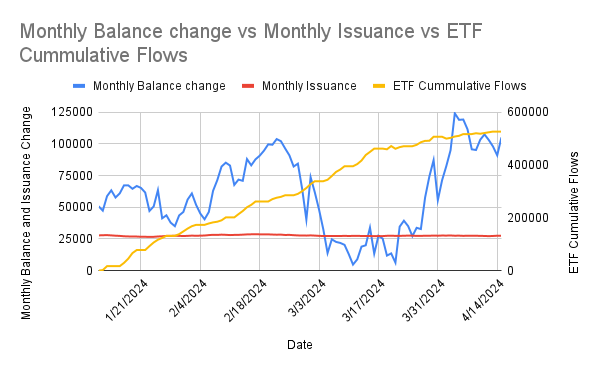
Source: Glassnode
*Monthly Balance Change includes different cohort of investors that hold >1, >10, >100, >1K BTC
Ethereum’s Most Anticipated Application of the Year is Live
EigenLayer, a protocol that allows ETH users to “re-stake” their existing staked ETH to validate the security of external networks known as Actively Validated Services (AVS), has finally deployed on mainnet. EigenLayer has been long anticipated as it enables capital efficiency by allowing users to earn additional yield on top of their ETH staking yield. Further, it allows younger protocols to borrow the security assurances of Ethereum. This is crucial, as it circumvents the need for non-established protocols to develop their own security measures from scratch. This translates to a more cost-efficient approach while simultaneously bolstering their decentralization, as newer projects can anchor their security to Ethereum’s.
By opting to earn additional yield, users subject themselves to heightened smart contract risks, as they become exposed to the vulnerabilities of both Ethereum and the additional protocol relying on its security. Further, a large portion of ETH could end up being “re-staked” in EigenLayer instead of just validating the security of Ethereum, creating a problem of misalignment. In simpler terms, some validators might focus on maximizing their profits by pursuing strategies that prioritize short-term gains over the long-term security of the network. Moreover, the growing enthusiasm for the protocol suggests that a significant portion of the crypto economy might rely on Ethereum’s security assurances. Currently, 14% of all staked ETH is being allocated towards Eigen’s re-staking strategy. The continuation of this trend could lead to centralization, posing a risk as Ethereum might inadvertently become a single point of failure over a longer time horizon.
Wide-spread slashing is another concern. In essence, if a substantial amount of ETH is restaked in a single protocol, then a slashing event due to malicious or unintended behavior could significantly impact honest ETH stakers. Thus, Eigen proposed a slashing committee, comprising esteemed ETH developers and trusted community members, empowered to veto such occurrences and safeguard Ethereum’s integrity.
The final risk concerns a new breed of tokens known as Liquid Restaking Tokens (LRTs), which operate atop EigenLayer. LRTs, akin to Liquid Staking Tokens (LSTs) issued by the established Lido protocol in 2021, aim to unlock similar capital efficiency by allowing users to use their re-staked ETH as collateral for lending and borrowing. Given that restaked ETH in Eigen can’t be used across DeFi platforms, users have turned to LRT protocols like Ether.fi and Renzo to seek higher levels of capital flexibility, with their restaked assets. For context, LRTs grew exponentially by a factor of 28 throughout Q1, increasing from nearly 100K units to the current figure of 2.8M, as can be seen below in Figure 3, showing its soaring demand.
Figure 3 – Growth of Liquid Restaking Tokens (LRTs) on EigenLayer

Source: @yulia_is_here on Dune
While LRTs can offer amplified gains through leveraged lending, they can also exacerbate losses, potentially increasing systemic risk in market downturns. Since some LRT protocols can’t offer withdrawal yet, users may be forced to swap their LRT token into ETH on thinly traded secondary markets and intensify their drawdowns.
All in all, the impact of Eigenlayer is not to be understated, as the excitement surrounding the new primitive has propelled it to become the second largest protocol on Ethereum by Total Value Locked (TVL), boasting an impressive $12.6B. This already eclipses the TVL of established players like Solana by fourfold, highlighting the immense potential and adoption that EigenLayer is witnessing despite its brief existence. Further, the excitement building up to its launch since they unveiled their roadmap in March has propelled the Ethereum validator entry queue to its highest level since September. The queue now necessitates a minimum waiting period of ~12 days before new validators can join the network, as seen below in Figure 4. Nevertheless, keep an eye out as we prepare to release a more in-depth exploration of EigenLayer risks over the coming weeks.
Figure 4: Ethereum Validator Entry Queue in Days
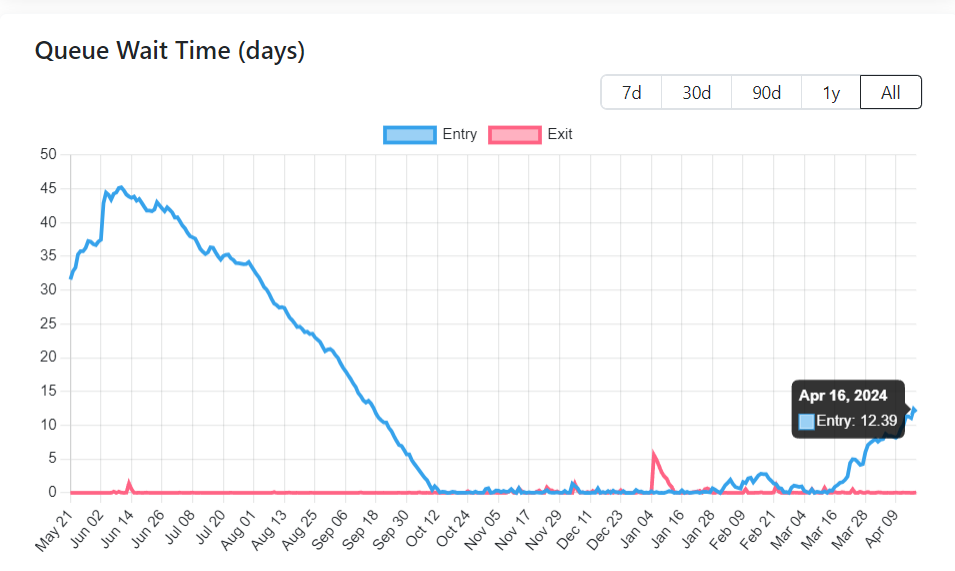
Source: ValidatorQueue
Bookmarks
Have you read our latest report, The Bitcoin Halving and Beyond? Click here to get a digital copy.
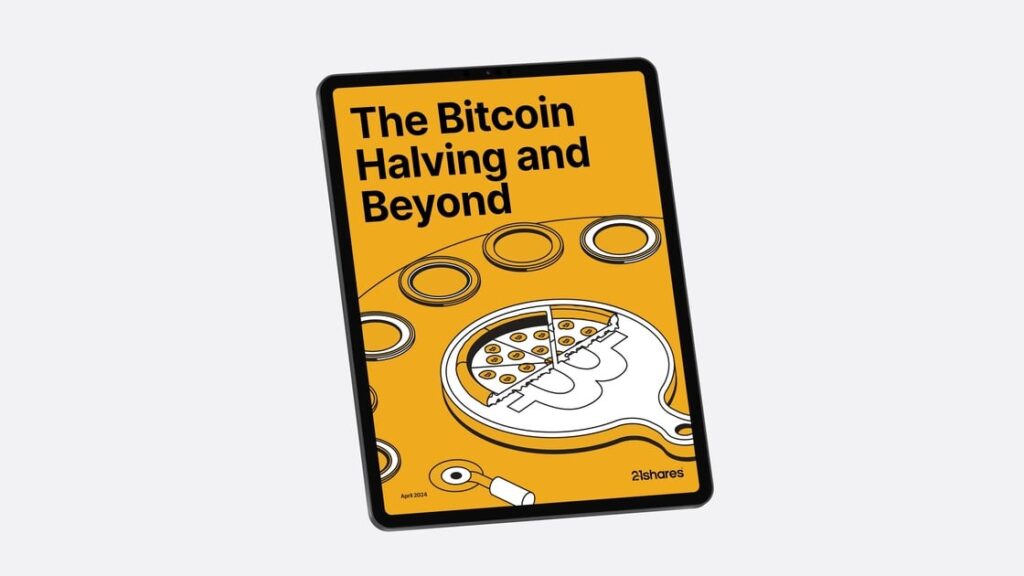
This Week’s Calendar

Source: Forex Factory, 21Shares
Research Newsletter
Each week the 21Shares Research team will publish our data-driven insights into the crypto asset world through this newsletter. Please direct any comments, questions, and words of feedback to research@21shares.com
Disclaimer
The information provided does not constitute a prospectus or other offering material and does not contain or constitute an offer to sell or a solicitation of any offer to buy securities in any jurisdiction. Some of the information published herein may contain forward-looking statements. Readers are cautioned that any such forward-looking statements are not guarantees of future performance and involve risks and uncertainties and that actual results may differ materially from those in the forward-looking statements as a result of various factors. The information contained herein may not be considered as economic, legal, tax or other advice and users are cautioned to base investment decisions or other decisions solely on the content hereof.
Du kanske gillar
-


FalconX förvärvar den ledande ETP-leverantören 21shares, vilket accelererar konvergensen av digitala tillgångar och traditionell finans
-


Bitcoin within 15% of its all-time high: Should you still allocate?
-
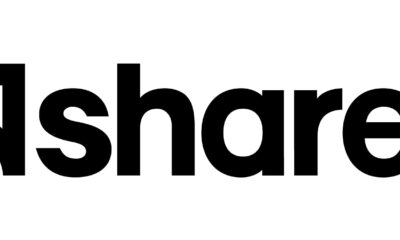

Globala krypto-ETPer förvaltade tillgångar når 250 miljarder dollar
-


Record crypto liquidations amid tariff shock
-
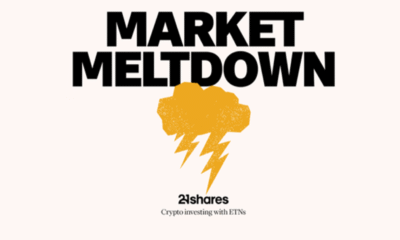

Crypto market update: record liquidations amid tariff shock
-
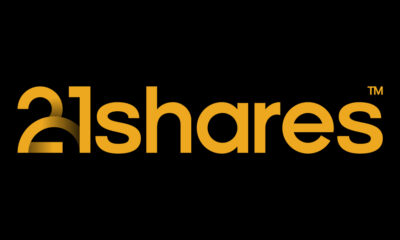

UK to drive more Bitcoin and Ethereum demand
Nyheter
FalconX förvärvar den ledande ETP-leverantören 21shares, vilket accelererar konvergensen av digitala tillgångar och traditionell finans
Publicerad
9 timmar sedanden
22 oktober, 2025
Förvärvet förenar FalconX marknadsledande Prime Brokerage-plattform med 21shares ETP-infrastruktur för att främja investeringsprodukter för digitala tillgångar
Markerar FalconX tredje strategiska transaktion under 2025, vilket understryker dess avgörande roll i att forma ekosystemet för digitala tillgångar
FalconX, en ledande institutionell Prime Brokerage-leverantör för digitala tillgångar, meddelade idag att de har gått med på att förvärva 21shares, leverantören av världens största utbud av börshandlade fonder och produkter (ETFer/ETPer) inom kryptovaluta. Transaktionen representerar en viktig milstolpe i FalconX strategi att accelerera konvergensen av noterade marknader och digitala tillgångar, samtidigt som den stärker sin globala närvaro i USA, Europa och Asien-Stillahavsområdet.
I en av de viktigaste ETP-branschtransaktionerna de senaste åren sammanför förvärvet 21shares expertis inom utveckling och distribution av tillgångsförvaltningsprodukter med FalconX institutionella infrastruktur, struktureringskapacitet och riskhanteringsplattform.
Tillsammans kommer de två företagen att accelerera skapandet av skräddarsydda investeringsprodukter som möter den växande institutionella och privata efterfrågan på reglerad exponering för digitala tillgångar.
Sedan grundandet 2018 av Hany Rashwan och Ophelia Snyder har 21shares vuxit till en global ledare inom digitala ETPer och förvaltar tillgångar till ett värde av över 11 miljarder dollar fördelat på 55 noterade produkter per den 30 september 2025. Dess egenutvecklade teknikplattform och väletablerade nätverk av partners ligger till grund för deras förmåga att snabbt och i stor skala lansera nya produkter på marknaden. FalconX, medgrundat av Raghu Yarlagadda, har underlättat handelsvolymer på över 2 biljoner dollar och en global kundbas på över 2 000 institutioner, tack vare sin kryptobaserade handels-, kredit- och teknikinfrastruktur.
”21shares har byggt en av de mest betrodda och innovativa produktplattformarna inom digitala tillgångar”, säger Raghu Yarlagadda, VD för FalconX. ”Vi bevittnar en kraftfull konvergens mellan digitala tillgångar och traditionella finansmarknader, då krypto-ETPer öppnar nya kanaler för investerarnas deltagande genom reglerade, välbekanta strukturer. FalconX har byggt den institutionella ryggraden för handel, derivat och kredit, och att utöka den infrastrukturen till börsnoterade marknader genom 21Shares är ett naturligt nästa steg mot att stärka marknadseffektiviteten. För FalconX är detta en medveten, långsiktig investering i att bygga ett varaktigt företagsvärde över marknadscykler.”
”Under de senaste 8 åren har vi byggt 21shares verksamhet från 0 dollar till mer än 11 miljarder dollar i förvaltat värde. Vi har skalat upp för att nå miljontals kunder i alla hörn av världen och fört in dem i krypto med våra produkter och vår forskning”, säger 21shares grundare Ophelia Snyder och Hany Rashwan. ”Vi ser verkligen fram emot att FalconX fortsätter att bygga vidare på denna starka grund för nästa kapitel i 21shares utveckling.”
”Vårt mål har varit att göra kryptoinvesteringar tillgängliga för alla genom branschledande börshandlade produkter”, säger Russell Barlow, VD för 21shares. ”Nu kommer FalconX att göra det möjligt för oss att agera snabbare och utöka vår räckvidd. Tillsammans kommer vi att vara pionjärer inom lösningar som möter de ständigt växande behoven hos investerare i digitala tillgångar världen över.”
Efter slutförandet kommer 21shares att fortsätta förvaltas oberoende under FalconX-paraplyet. Barlow kommer att fortsätta som VD för 21shares och arbeta nära ledningsgruppen på FalconX för att främja en gemensam vision för framtiden för ekosystemet för digitala tillgångar. Inga förändringar av konstruktionen eller investeringsmålen för de befintliga 21shares ETPerna (Europa) eller ETFerna (USA) är planerade.
Detta förvärv bygger på FalconX strategi för 2025 för att stärka sin globala verksamhet inom handel, kapitalförvaltning och marknadsinfrastruktur. Det följer integrationen av Arbelos Markets och majoritetsandelen som togs i Monarq Asset Management tidigare i år, tillsammans med expansioner i Latinamerika, Asien-Stillahavsområdet och Europa, Mellanöstern och Afrika. I takt med att digitala tillgångar utvecklas till vanliga investeringsprodukter placerar detta drag FalconX i centrum för hur institutioner och investerare får tillgång till kryptoekonomin.
Om FalconX
FalconX är en ledande mäklarfirma för digitala tillgångar för världens främsta institutioner. Vi erbjuder omfattande tillgång till global likviditet för digitala tillgångar och ett komplett utbud av handelstjänster. Vårt dedikerade team, som är tillgängligt dygnet runt för konto-, operativa och handelsbehov, gör det möjligt för investerare att navigera på marknaderna dygnet runt. FalconX Bravo, Inc., ett dotterbolag till FalconX, var den första CFTC-registrerade swap-handlaren som fokuserade på kryptovalutaderivat.
FalconX stöds av investerare som Accel, Adams Street Partners, Altimeter Capital, American Express Ventures, B Capital, GIC, Lightspeed Venture Partners, Sapphire Ventures, Thoma Bravo, Tiger Global Management och Wellington Management. FalconX har kontor i Silicon Valley, New York, London, Hongkong, Bengaluru, Singapore och Valletta. För mer information, besök falconx.io eller följ FalconX på X och LinkedIn.
”FalconX” är ett marknadsföringsnamn för FalconX Limited och dess dotterbolag. Tillgängligheten av produkter och tjänster är beroende av jurisdiktionella begränsningar och FalconX-enhetens kapacitet. För mer information om vilka juridiska personer som erbjuder specifika produkter och tjänster, vänligen se informationen på vår offentliga webbplats, som ingår häri, eller kontakta din relationskontakt.
Om 21shares
21shares är en av världens ledande leverantörer av börshandlade produkter för kryptovaluta och erbjuder de största sviterna av fysiskt stödda krypto-ETPer på marknaden. Företaget grundades för att göra kryptovaluta mer tillgänglig för investerare och för att överbrygga klyftan mellan traditionell finans och decentraliserad finans. 21shares noterade världens första fysiskt stödda krypto-ETP 2018 och byggde upp en sjuårig meritlista av att skapa börshandlade fonder för kryptovaluta som är noterade på några av de största och mest likvida värdepappersbörserna globalt. Med stöd av ett specialiserat forskarteam, egenutvecklad teknik och djupgående expertis inom kapitalmarknaden levererar 21shares innovativa, transparenta och kostnadseffektiva investeringslösningar.
För mer information, besök www.21shares.com.
Nyheter
Hybridreplikering: nästa stora grej för ETFer?
Publicerad
10 timmar sedanden
22 oktober, 2025
ETFer replikerar sitt index antingen fysiskt eller via syntetisk replikering – nu introduceras en ny replikeringsmetod av Scalable Capital
I ETF-världen sker det mindre och större produktrevolutioner då och då. En av dessa i år är förmodligen den nya ”hybridreplikeringen”. I den här artikeln tittar vi närmare på vad detta handlar om och vem som är först med att använda den i sina ETFer.
Hybridreplikering: Vad är det?
Replikeringsmetoder för ETFer kunde tidigare delas in i två grundläggande varianter: Fysisk och syntetisk replikering (även om fysisk replikering fortfarande har en underkategori med ”optimerad sampling”).
Som namnet ”hybridreplikering” antyder är denna nya replikeringsmetod en blandning av fysisk och syntetisk replikering.
ETFen replikerar således dynamiskt sitt underliggande index och kan använda både den ena och den andra varianten för att följa sitt index. Detta kan vara särskilt fördelaktigt för brett diversifierade globala ETFer för att optimalt kunna följa respektive delmarknader.
Vi ska titta närmare på exakt hur detta fungerar och fördelarna och nackdelarna med denna metod om en stund. Men först ska vi titta på de grundläggande skillnaderna mellan de olika replikeringsmetoderna.
Skillnaden: Fysisk, syntetisk och hybridreplikering av ETFer
I grund och botten erbjuder varje form av replikering vissa fördelar och nackdelar. Det är därför det tidigare fanns tre olika replikeringsmetoder som ETFer kunde använda för att replikera sitt motsvarande index. Nu läggs hybridreplikeringsmetoden till:
- (Fullständig) fysisk replikering används för att spåra lättillgängliga och mycket likvida marknader. ETF:er på DAX 40, FTSE 100 eller S&P 500 replikeras därför ofta direkt och fullständigt. De aktier som ingår är bland de största aktiebolagen i respektive land och är lätta att handla med. Dessutom är ansträngningen från ETF-leverantörernas sida att köpa några dussin eller några hundra aktier begränsad.
- Optimerad sampling används huvudsakligen för stora index med flera tusen aktiebolag. För att följa ett globalt globalt aktieindex som MSCI ACWI IMI räcker det till exempel att köpa ett representativt urval på cirka 3 500 aktier istället för de cirka 9 000 aktier som indexet innehåller. Detta sparar ETFen, och därmed dig som investerare, pengar och är mycket mer effektivt.
- Syntetisk replikering används företrädesvis för marknader som är svåra att komma åt, där direktköp av aktier är alldeles för dyrt eller försvåras av regulatoriska förhållanden. Swap-ETFer erbjuder också strukturella fördelar på vissa marknader – till exempel när det gäller källskattebesparingar. Mer om detta strax …
- Hybridreplikering är en kombination av fysisk och syntetisk replikering. En ETF som använder hybridreplikering kan själv inom ETFen bestämma vilka marknader den vill replikera direkt via fysisk replikering och vilka marknader som är bättre inkluderade i portföljen via swappar.
Jämförelse av ETF-replikeringsmetoder
| Fysisk (fullständig) | Fysisk (sampling) | Syntetiskt | Hybrid | |
| Replikerings- metod | Fullständig replikering | Sampling | Swap-based | Blandning av fysisk och syntetisk replikering |
| ETF-beskrivning | Indexet replikeras 1:1 i ETFen | ETF:n innehar ett representativt urval av indexaktier | Indexreplikering sker via en swaptransaktion | ETF innehar aktier både direkt och via swappartners |
| Underliggande tillgångar | Aktier, obligationer | Aktier, obligationer | Aktier, obligationer, råvaruindex, penningmarknadsindex, korta och hävstångsindex | Aktier |
| Typiska egenskaper hos index- komponenterna | Likvida värdepapper | (Delvis) illikvida värdepapper | Likvida och illikvida värdepapper, investeringsrestriktioner (handelsrestriktioner, beskattning), olika tidszoner | Likvida och illikvida värdepapper, investeringsrestriktioner (handelsrestriktioner, beskattning), olika tidszoner |
| Idealt antal indexkomponenter | Lågt | Högt | Låg till hög | Låg till hög |
| Ideal utdelnings- policy | Utdelande och ackumulerande | Utdelande och ackumulerande | Övervägande ackumulerande | Övervägande |
| Exempel index | DAX, Eurostoxx 50, FTSE 100, Dow Jones 30 | MSCI World, MSCI Emerging Markets, MSCI ACWI IMI | MSCI World, MSCI Emerging Markets, Eurostoxx 50 Rohstoff-Indizes, Short DAX, Leverage DAX | MSCI World, MSCI Emerging Markets, MSCI ACWI IMI, Eurostoxx 50 |
Hybrida replikerande ETFer är för närvarande endast tillgängliga på aktieindex
Hur fungerar hybridreplikering med ETFer?
Styrkorna med den nya replikeringsmetoden är särskilt tydliga i brett diversifierade aktieindex som MSCI ACWI eller FTSE All World. Syftet med hybridreplikeringsmetoden är att kombinera fördelarna med fysisk replikering med fördelarna med den syntetiska replikeringsmetoden. Hur fungerar detta i praktiken?
Ett exempel är swap-ETFer på S&P 500, som har en avgörande fördel jämfört med sina fysiskt replikerande syskon – det finns ingen källskatt på utdelningar.
Hur då? Medan fysiskt replikerande ETFer måste betala minst 15 % källskatt på amerikanska utdelningar eftersom de investerar direkt i amerikanska aktier, byter en swap-ETF helt enkelt indexets avkastning med ett motsvarande finansinstitut (motparten eller swappartnern).
Inga amerikanska aktier krävs i ETFens bärarportfölj. Och där inga amerikanska aktier köps direkt uppstår ingen källskatt. Detta är också anledningen till att syntetiska ETFer på S&P 500 har något högre långsiktig avkastning än fysiska S&P 500-ETFer.
Med syntetiska ETFer kan investerare också dra nytta av en unik strukturell dynamik på den kinesiska lokala A-aktiemarknaden. Denna specifika aktiemarknad är starkt begränsad eller reglerad och erbjuder samtidigt en attraktiv miljö för professionella investerare (t.ex. hedgefonder) som följer marknadsneutrala strategier.
Dessa investerare har dock ofta begränsad tillgång, till exempel för blankning för att säkra sin marknadsrisk. Som ett resultat är dessa marknadsaktörer beredda att betala swap-motparterna i syntetiska ETFer (vanligtvis stora banker) en premie på den korta exponering som motparterna är exponerade för.
Denna extra premie förs delvis vidare till investerare i syntetiska A-aktie-ETFer och har historiskt sett lett till överavkastning. Premien kan fluktuera över tid och är främst beroende av efterfrågan från dessa marknadsaktörer.
Jämförelse
En nackdel med en syntetisk ETF jämfört med en fysiskt replikerande ETF är att den kanske inte kan genomföra värdepappersutlåning om den inte innehar de nödvändiga värdepapperen i sin portfölj. Många swap-ETFer använder ändå inte värdepappersutlåning. Detta är dock ett vanligt sätt för ETF:er att generera ytterligare intäkter för fondinvesterare.
Motpartsrisk med swap-ETFer
Med swap-ETFer anges ofta den så kallade motpartsrisken som en stor nackdel. Men är risken med swap-ETFer verkligen så stor? Det korta svaret är: Nej. Därför att:
- Som regel innehar både ETFen och swap-motparten säkerhet i form av likvida värdepapper.
- Denna säkerhet måste alltid fysiskt säkra minst 90 % av nettotillgångsvärdet (NAV). Eller tvärtom: motpartsrisken är begränsad till maximalt 10 % av fondens tillgångar och balanseras dagligen.
- I praktiken är syntetiska ETFer ofta översäkrade (säkerhet > NAV) och du kan när som helst se säkerhetsportföljen och de valda swap-partnerna transparent på webbplatserna för många ETF-leverantörer.
- Hittills har europeiska investerare inte lidit några förluster på grund av swap-motpartsrisk – inte ens under de allvarligaste kriserna (t.ex. 2008 och 2020).
Och det är här hybridreplikeringsmetoden kommer in i bilden – eftersom den till exempel kan användas för att syntetiskt replikera den amerikanska marknaden ”källskatteoptimerad” i en global ETF, medan den europeiska eller japanska aktiemarknaden fysiskt replikeras ”värdepappersutlåningskonformt”. Resultatet är faktiskt kombinationen av ”det bästa av två världar” – eftersom respektive ETF optimalt kan kartlägga motsvarande delmarknader beroende på de strukturella förhållandena och därmed möjliggöra en minimalt högre avkastning för dig som ETF-investerare.
Viktigt: Syntetiska ETFer kan också låna ut värdepapper från carrierportföljen. Det beror sedan på vilka värdepapper i carrierportföljen som är efterfrågade och hur. Med högre efterfrågan eller mindre likviditet kan till exempel vanligtvis högre avkastning uppnås än med mycket likvida värdepapper. Du kan läsa mer om detta i vår artikel om värdepappersutlåning med ETF:er.
Vilka ETFer använder den nya hybridreplikering?
I dag erbjuder endast en leverantör en ETF på MSCI ACWI med hybridreplikering: Xtrackers. Den Frankfurt-baserade kapitalförvaltaren har samarbetat med onlinemäklaren Scalable Capital för att lansera en global ETF.
Nyheter
31IG ETF företagsobligationer med förfall 2031
Publicerad
11 timmar sedanden
22 oktober, 2025
iShares iBonds Dec 2031 Term EUR Corporate UCITS ETF EUR (Dist) (31IG ETF) med ISIN IE000I2WYEU9, strävar efter att spåra Bloomberg MSCI December 2031 Maturity EUR Corporate ESG Screened index. Bloomberg MSCI December 2031 Maturity EUR Corporate ESG Screened-index följer företagsobligationer denominerade i EUR.
Indexet speglar inte ett konstant löptidsintervall (som är fallet med de flesta andra obligationsindex). Istället ingår endast obligationer som förfaller under det angivna året (här: 2031) i indexet. Indexet består av ESG (environmental, social and governance) screenade företagsobligationer. Betyg: Investment Grade. Löptid: december 2031 (Denna ETF kommer att stängas efteråt).
Den börshandlades fondens TER (total cost ratio) uppgår till 0,12 % p.a. iShares iBonds Dec 2031 Term EUR Corporate UCITS ETF EUR (Dist) är den billigaste och största ETF som följer Bloomberg MSCI December 2031 Maturity EUR Corporate ESG Screened index. ETFen replikerar resultatet för det underliggande indexet genom samplingsteknik (köper ett urval av de mest relevanta indexbeståndsdelarna). Ränteintäkterna (kupongerna) i ETFen delas ut till investerarna (Årligen).
Denna ETF lanserades den 5 november 2024 och har sin hemvist i Irland.
Investeringsmål
Fondens mål är att uppnå avkastning på din investering genom en kombination av kapitaltillväxt och inkomst på fondens tillgångar, vilket återspeglar avkastningen från Bloomberg MSCI December 2031 Maturity EUR Corporate ESG Screened Index, fondens jämförelseindex.
Handla 31IG ETF
iShares iBonds Dec 2031 Term EUR Corporate UCITS ETF EUR (Dist) (31IG ETF) är en europeisk börshandlad fond. Denna fond handlas på till exempel Deutsche Boerse Xetra.
Det betyder att det går att handla andelar i denna ETF genom de flesta svenska banker och Internetmäklare, till exempel DEGIRO, Nordnet, Aktieinvest och Avanza.
Börsnoteringar
| Börs | Valuta | Kortnamn |
| XETRA | EUR | 31IG |
Största innehav
| Emittent | Vikt % |
| BANQUE FEDERATIVE DU CREDIT MUTUEL SA | 2.98 |
| BANCO SANTANDER SA | 2.24 |
| INTESA SANPAOLO SPA | 1.76 |
| BPCE SA | 1.52 |
| MERCEDES-BENZ GROUP AG | 1.32 |
| CREDIT MUTUEL ARKEA | 1.31 |
| TELEFONICA EMISIONES SAU | 1.29 |
| MEDTRONIC GLOBAL HOLDINGS SCA | 1.27 |
| SIEMENS FINANCIERINGSMAATSCHAPPIJ N.V. | 1.25 |
| VOLKSWAGEN LEASING GMBH | 1.06 |
Innehav kan komma att förändras

FalconX förvärvar den ledande ETP-leverantören 21shares, vilket accelererar konvergensen av digitala tillgångar och traditionell finans

Hybridreplikering: nästa stora grej för ETFer?

31IG ETF företagsobligationer med förfall 2031

Investera i Worldcoin med en börshandlad produkt

ISRC ETF ger exponering mot företagsobligationer denominerade i euro

Fokus mot en helt ny börshandlad produkt i september 2025

M5TYs senaste utdelningstakt (55 %) belyser covered call-strategins inkomstpotential

Could Bitcoin be the key to your dream house?

Börshandlade fonder för europeiska small caps

Levler noterar ytterligare fyra börshandlade fonder i Sverige
Populära
-

 Nyheter3 veckor sedan
Nyheter3 veckor sedanFokus mot en helt ny börshandlad produkt i september 2025
-
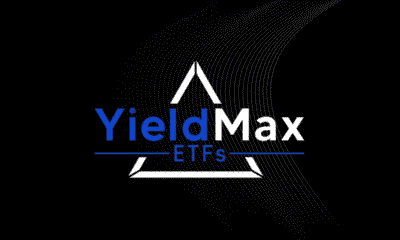
 Nyheter4 veckor sedan
Nyheter4 veckor sedanM5TYs senaste utdelningstakt (55 %) belyser covered call-strategins inkomstpotential
-
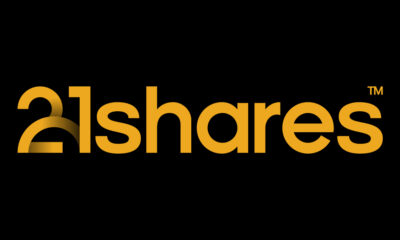
 Nyheter4 veckor sedan
Nyheter4 veckor sedanCould Bitcoin be the key to your dream house?
-
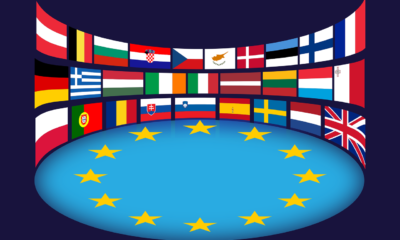
 Nyheter3 veckor sedan
Nyheter3 veckor sedanBörshandlade fonder för europeiska small caps
-
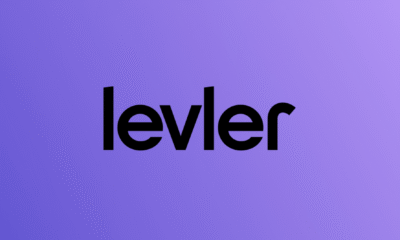
 Nyheter2 veckor sedan
Nyheter2 veckor sedanLevler noterar ytterligare fyra börshandlade fonder i Sverige
-

 Nyheter3 veckor sedan
Nyheter3 veckor sedanMiners Find Their Mojo as Gold Consolidates
-

 Nyheter4 veckor sedan
Nyheter4 veckor sedanState Street och Blackstone lanserar aktivt förvaltade CLO-ETFer i Europa
-

 Nyheter4 veckor sedan
Nyheter4 veckor sedanTech multi-megatrend ETF utvecklar metodologi med tillägg av exponeringar mot kvantberäkning och försvarsteknik


